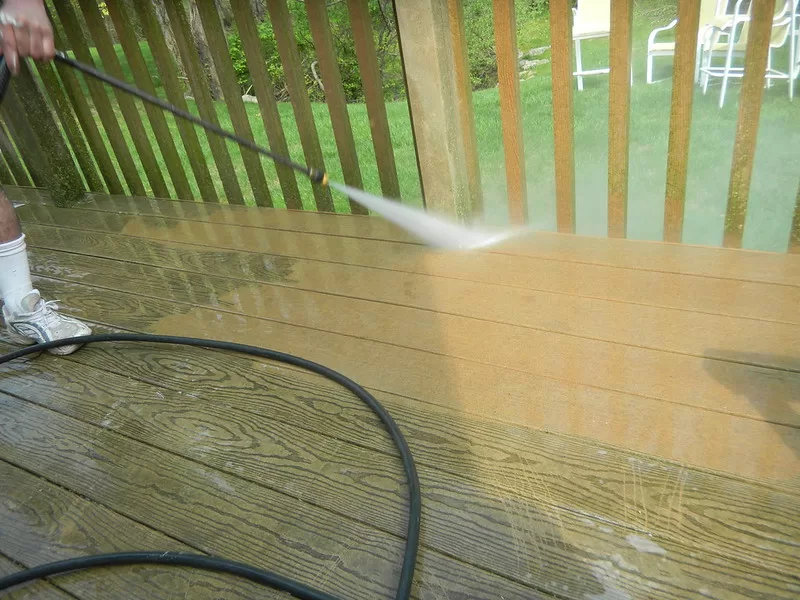Pressure washing, a powerful and effective method for cleaning various surfaces, has gained significant popularity for its ability to rejuvenate the appearance of everything from homes to driveways.

In this comprehensive guide, we’ll delve into the world of pressure washing, providing you with insights, tips, and techniques to master this art and achieve remarkable results.
Pressure washing, also known as power washing, involves using high-pressure water to clean surfaces like decks, driveways, and even vehicles. With the right equipment and techniques, you can achieve exceptional cleaning results that make your property look brand new.
What is Pressure Washing?
Pressure washing, also known as power washing, is a highly effective method of deep cleaning various surfaces. It involves using high-pressure water jets to remove dirt, grime, mold, mildew, and any other stubborn stains.
What sets Pressure Washing apart from traditional cleaning methods is the immense force generated; this force can quickly and efficiently blast away even the toughest debris.
One of the main advantages of pressure washing is its versatility. It can be used on a wide range of surfaces such as concrete sidewalks, driveways, decks, fences, or even vehicles. Additionally, it is eco-friendly since it relies primarily on water instead of chemical cleaning solutions.
Pressure washing not only restores the appearance of surfaces but also helps maintain their structural integrity in the long run by eliminating harmful contaminants that can cause deterioration over time.
1. Understanding Pressure Washing
Pressure washing utilizes a powerful stream of water to remove dirt, grime, mold, and other debris from surfaces. It’s an effective and efficient way to clean large areas and tough-to-reach spots.
2. Benefits of Pressure Washing
Pressure washing offers numerous benefits, including enhancing curb appeal, preventing damage caused by accumulated dirt, and extending the lifespan of your property’s surfaces.
Read Also:
3. Essential Equipment and Supplies
To get started, you’ll need a pressure washer, water source, extension cords, safety gear (goggles, gloves), and cleaning solutions appropriate for the surfaces you’ll be cleaning.
4. Safety Precautions
Safety is paramount when pressure washing. Wear protective gear, avoid pointing the nozzle at people or animals, and be cautious on wet surfaces to prevent slips.
5. Choosing the Right Pressure Washer
Consider the pressure washer’s PSI and GPM ratings. Higher PSI provides more power, suitable for tough cleaning jobs, while lower PSI is better for delicate surfaces.
6. Selecting the Appropriate Nozzles
Different nozzles offer varying spray patterns. A wider spray is gentler, while a narrow spray is more concentrated and powerful. Choose the right nozzle for each task.
7. Prepping the Area
Before you start pressure washing, remove obstacles, cover plants, and clear the area. This prevents damage and ensures a smoother cleaning process.
8. Using Cleaning Solutions
Cleaning solutions can enhance the cleaning process. Make sure to use appropriate detergents for your pressure washer and the surfaces you’re cleaning.
9. Mastering Pressure Washing Techniques
Hold the pressure washer wand at a slight angle, about 12 to 18 inches from the surface. Use overlapping strokes for even cleaning, and keep the nozzle moving to avoid damage.
10. Dealing with Different Surfaces
Different surfaces require different approaches. Adjust the pressure and technique based on whether you’re cleaning wood, concrete, vinyl, or other materials.
11. Removing Stubborn Stains
For tough stains, consider pre-soaking, using hot water, or applying specialized cleaners. Adjust the pressure and nozzle to avoid damaging the surface.
12. Maintaining Your Pressure Washer
Regularly clean the pressure washer’s filters, nozzles, and hoses. Store it in a dry, safe place to prevent damage.
13. Environmental Considerations
Be mindful of where the wastewater goes. Pressure washing can generate pollutants, so ensure proper disposal or consider using eco-friendly cleaning solutions.
FAQs
Can I pressure wash my car?
Yes, you can pressure wash your car, but use a wide spray pattern and keep a safe distance to avoid damaging the paint.
Is pressure washing safe for all surfaces?
While pressure washing is generally safe, it’s important to adjust the pressure and technique based on the surface type to prevent damage.
Can I pressure wash my roof?
Pressure washing a roof is not recommended as it can damage shingles and create leaks. Opt for alternative cleaning methods.
How often should I pressure wash my home?
Pressure washing frequency varies. Generally, an annual cleaning can help maintain your property’s appearance.
Can pressure washing remove graffiti?
Pressure washing can effectively remove some types of graffiti, but stubborn cases might require additional treatments.
Conclusion
In conclusion, pressure washing is a highly effective method for cleaning and maintaining various surfaces. It offers numerous benefits, including removing dirt, grime, mold, and mildew, as well as enhancing the overall appearance of your property.
By following the steps outlined in this ultimate guide to pressure washing, you can ensure that you use this powerful tool safely and efficiently.
Remember to always wear protective gear, use the appropriate cleaning solutions, and adjust the pressure accordingly for each surface. So why wait? Start pressure washing today and give your home or business a fresh new look!









